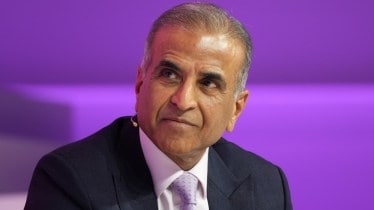Bharti Enterprises chairman Sunil Bharti Mittal’s statement that satcom spectrum should be allocated via auctions for retail services in urban areas has added a new twist to the issue. FE explains what this means and whether such segregation of services is feasible.
Auction versus administrative allocation
In the telecommunications space, auction is a process where operators bid for the spectrum after a reserve price is set by the government. In the administrative or non-auction route, the government allocates the spectrum at a certain price based on certain terms and conditions. For telecom services, auction is the only way to ensure transparency and fair price discovery. However, the Telecom Act has talked about administrative allocation of spectrum for areas of strategic interest, government usage, and where it is not feasible to auction the spectrum because of the nature of services. Satellite communication services fall in the third category where globally it has not been feasible to auction the spectrum. This is because satellite spectrum is a shared resource and can be collaboratively used by various entities under regulated conditions. The same frequencies can be reused by multiple satellite networks in the same geographic areas. Unlike terrestrial spectrum, which can be divided into exclusive blocks, satellite spectrum cannot be segmented. Thus auction of satellite spectrum is technically challenging and not feasible.
Has Airtel changed its stance?
Not really. But it has added a caveat. When the Telecom Regulatory Authority of India (Trai) initiated discussions around the assignment of satellite spectrum, Bharti Enterprises’ OneWeb, Elon Musk’s Starlink and Amazon’s Project Kuiper called for administrative allocation. Only Reliance Jio kept pushing for auctions to ensure a level playing field. While sticking to his position that for remote, far-flung areas where terrestrial services do not reach, satcom spectrum should be administratively allocated, Mittal said if any operator wanted to provide retail services in urban areas then the rules for it should be similar to those for telcos, meaning in that case it should buy spectrum through auction. This has led to a debate whether such segregation of services between far-flung, remote areas and urban centres is at all possible.
What Starlink and Kuiper have said
After Mittal’s comment on the satellite spectrum, Musk said any decision to auction satellite spectrum would be unprecedented. After the government clarified its stance stating that it will go ahead with the non-auction route, Musk thanked the government and said the company will do its best to serve the people of India.
Amazon’s Kuiper wants the government not to keep the prices of the airwaves higher as that will compel the satcom companies to go for the connected people who are already being served by telecom operators, rather than reaching out to unconnected regions. Starlink and Kuiper are yet to get licences to provide satcom services in the country.
Stance of the government & the telecom regulator
Communications Minister Jyotiraditya Scindia has said that satellite spectrum across the world is allocated administratively, so India is not doing anything different from the rest of the world. The minister said that satellite spectrum is shared spectrum and it cannot be priced individually. However, administrative allocation does not mean that airwaves would be given for free. Of course, there will be a charge. “What that charge will be and the formula for charging that will be decided by the Trai,” Scindia said.
The Trai has floated a consultation paper and said it will be considering views of all the stakeholders before coming up with their views on the paper. It is exploring various models for pricing the satellite spectrum, which are linked to adjusted gross revenue (AGR) of the companies and per-MHz quantity of spectrum held. However, neither the Telecom Act’s Schedule 1 nor Trai’s consultation paper have talked about any such geographical division of services.
Dynamics of the satcom market
Industry experts say the satcom market is very competitive and it is extremely difficult to make profits here. There are many technological systems chasing a limited market opportunity. As a result, every satellite operator will do whatever it can to impede or delay the entry of a competitor. Gareth Owen, associate director at Counterpoint Research said, “There are business case opportunities, such as 5G backhauling, but terrestrial networks will always be less expensive than satellite, except in thinly populated regions. As more fiber is laid and 5G extends to rural regions, telecom operators will shift from satellite to terrestrial networks”. The pricing will vary from region to region but will definitely be much higher than mobile services. The unanimous view is that satellite and terrestrial networks are very different, for different kind of people, and for different regions. The business economics of the two are totally different, hence the same spectrum allocation method for the two is not a feasible option.
